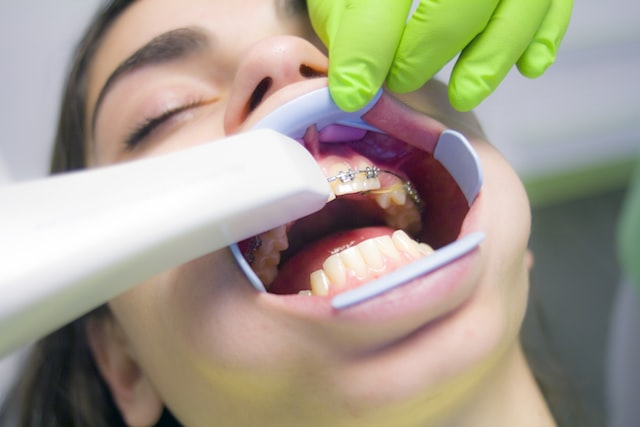Crooked teeth are among the most common dental issues in both children and adults. Nearly 90% of people in the US have misaligned teeth or jaws. While a slight misalignment may not be a cause for concern, people with distinctively crooked teeth may be affected by various health or speech problems.
Fortunately, many orthodontic treatment options can help straighten teeth and correct these issues permanently. Orthodontic treatments are trending in major states like Florida. Even smaller cities, like Riverview and Lithia, have highly experienced orthodontists who specialize in correcting teeth and jaw misalignment. Continue reading to learn what crooked teeth are, their causes, and orthodontic treatment options.
What are Crooked Teeth?
Crooked teeth are teeth that are not properly aligned or positioned in the mouth. An example is teeth growing way above their actual position, also called peg teeth or Dracula teeth.
People with crooked teeth often find it difficult to bite and chew food properly. They could also face difficulty speaking particular words and cleaning their teeth properly. The presence of crooked teeth in a normally-aligned jaw can result in increased wear and tear on certain teeth, leading to chipping and tooth decay.
A variety of orthodontic treatments can permanently treat crooked teeth. Living in Riverview & Lithia, you can find top-notch orthodontic clinics treating crooked teeth. Just look up orthodontist expert near me in Riverview & Lithia, and you’ll find renowned clinics like Hess Orthodontics that specialize in teeth & jaw alignment and have years of experience treating various dental issues.
Causes of Crooked Teeth:
Various factors can cause crooked teeth in children and adults. An individual’s habits, lifestyle, or congenital structural issues can cause misaligned or crooked teeth. A combination of these factors usually causes crooked teeth.
Here are some possible causes of crooked teeth:
Genetics:
Some people are more prone to crooked teeth due to the inherited jaw or tooth structure. If a toddler has crooked, overcrowded teeth, chances are they will grow crooked permanent teeth later in childhood.
Early loss of baby teeth:
If baby teeth have fallen out too soon, adult teeth may not have enough room to grow in properly. This results in crooked teeth once the child grows permanent teeth later.
Thumb-sucking:
Prolonged thumb-sucking or using pacifiers can cause the front teeth to be pushed out of alignment or create an overbite problem in children when they grow their milk teeth or permanent bone teeth.
Tongue-thrusting:
When people frequently push their tongues against their front teeth, it can cause them to become crooked.
Improper oral hygiene:
Neglecting to brush and floss can lead to tooth decay and gum disease. Gum diseases often impact the structure of a tooth and cause teeth to shift or become crooked. As the disease progresses, your teeth may become loose and have alignment issues.
Jaw Misalignment:
Genetic overbite and underbite issues can alter the jaw’s structure over time. The jaw grows unevenly and results in crooked teeth.
Trauma:
Trauma is another major cause of crooked teeth. If a child or adult suffers trauma to the mouth, they may lose teeth and grow crooked ones. In some cases, a blow to the face can result in the teeth becoming crooked or misaligned.
Aging:
As we grow older, our teeth tend to move forward and become crowded. This happens more frequently in people who grow wisdom teeth later in life. The jaw bone loses substance and changes shape as we age, encouraging overcrowding of teeth in the front and subsequently forming crooked teeth.
Treatment Options for Crooked Teeth:
Orthodontic procedures can permanently straighten misaligned teeth. You can maintain better oral hygiene and chew your food more effortlessly when your teeth and jaws are aligned. Furthermore, when your gums are not overlapping, they can better support your teeth. Here are some of the most common treatment options for crooked and misaligned teeth:
Metal or Ceramic Braces:
Braces are the most common and traditional treatment option for crooked teeth. Metal or ceramic brackets and wires are used to straighten teeth gradually. The usual timeframe to fix crooked teeth with braces is between 24 to 36 months. However, the duration depends on your dental requirement and the severity of jaw or teeth issues.
Metal braces are a good treatment option for those with strong gums and teeth. Orthodontics experts attach these braces tightly to your teeth using brackets, wires, and bands. Although metal braces are less expensive than ceramic ones, they are also more uncomfortable and prominent.
Ceramic braces are made from ceramic with clear or tooth-colored archwires. They are not as prominent as metal wires, so it’s a good choice for those who don’t want their braces to be noticed much.
Clear Aligners:
Clear aligners or invisible braces are clear plastic trays custom-made to fit over the teeth and gradually shift crooked teeth into the correct position. These are popular because they are less noticeable than traditional braces. Clear aligners offer the most convenience as they can be removed and replaced every week.
Your dentist will apply a series of clear aligners to move your teeth and straighten them gradually. Clear aligners are usually recommended for minor alignment issues only.
Lingual Braces:
Unlike traditional braces, lingual braces have brackets and wires that are placed on the back of the teeth, facing the tongue. Lingual braces are invisible and recommended for milder misalignment. However, they are more expensive and difficult to clean.
Palatal Expanders:
Palatal expanders are commonly used for children. These devices are placed on the roof of the mouth to widen the upper jaw and create more space for the teeth. The orthodontist will fix the expanders to the person’s upper molar.
On each visit, the orthodontist will place gradual pressure on the upper jaw and right halves. This will allow the palate and bone to grow, increasing the mouth’s width to straighten crooked teeth and accommodate more teeth in the future.
Retainers:
Retainers are often used as a post-treatment option to retain straightened teeth in their position. Your orthodontist will use retainers after the treatment is finished to prevent a relapse. Retainers are also used to treat minor misalignment and overcrowding.
Final Thoughts:
Misalignment of jaws or crooked teeth is a common dental problem. However, severe misalignment can have a negative impact on your self-confidence and social orientation, besides developing various health and speech problems.
Crooked teeth can be easily treated by any of the treatment options mentioned above. The nature and severity of the problem and your particular preferences will determine the ideal solution for you. After assessing your teeth and jaw, your orthodontist will be able to offer the best solution.










